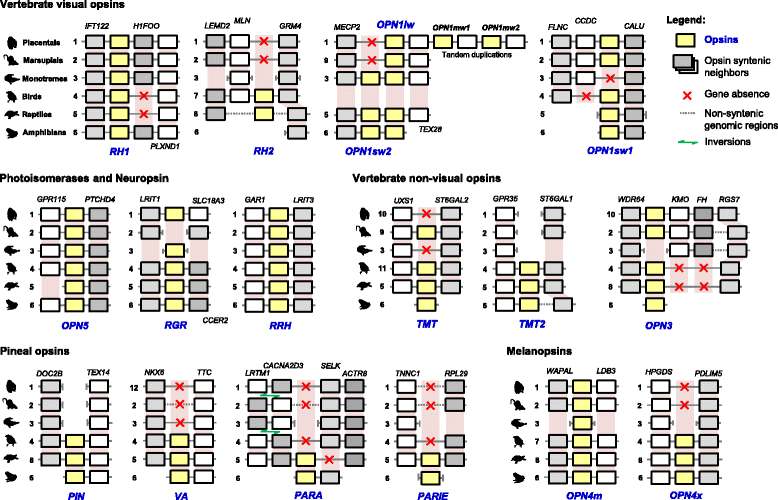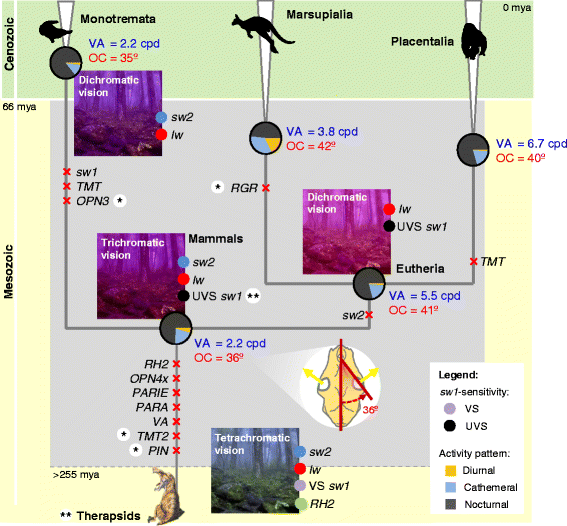Adaptive genomic evolution of opsins reveals that early mammals flourished in nocturnal environments
- PMID: 29402215
- PMCID: PMC5800076
- DOI: 10.1186/s12864-017-4417-8
Adaptive genomic evolution of opsins reveals that early mammals flourished in nocturnal environments
Abstract
Background: Based on evolutionary patterns of the vertebrate eye, Walls (1942) hypothesized that early placental mammals evolved primarily in nocturnal habitats. However, not only Eutheria, but all mammals show photic characteristics (i.e. dichromatic vision, rod-dominated retina) suggestive of a scotopic eye design.
Results: Here, we used integrative comparative genomic and phylogenetic methodologies employing the photoreceptive opsin gene family in 154 mammals to test the likelihood of a nocturnal period in the emergence of all mammals. We showed that mammals possess genomic patterns concordant with a nocturnal ancestry. The loss of the RH2, VA, PARA, PARIE and OPN4x opsins in all mammals led us to advance a probable and most-parsimonious hypothesis of a global nocturnal bottleneck that explains the loss of these genes in the emerging lineage (> > 215.5 million years ago). In addition, ancestral character reconstruction analyses provided strong evidence that ancestral mammals possessed a nocturnal lifestyle, ultra-violet-sensitive vision, low visual acuity and low orbit convergence (i.e. panoramic vision).
Conclusions: Overall, this study provides insight into the evolutionary history of the mammalian eye while discussing important ecological aspects of the photic paleo-environments ancestral mammals have occupied.
Keywords: Mammals; Nocturnal bottleneck; Nocturnal lifestyle; Opsins; Panoramic vision; Ultra-violet sensitive vision; Visual acuity.
Conflict of interest statement
Ethics approval and consent to participate
Not applicable.
Consent for publication
Not applicable.
Competing interests
The authors declare they have no competing interests.
Publisher’s Note
Springer Nature remains neutral with regard to jurisdictional claims in published maps and institutional affiliations.
Figures



References
-
- Walls G. The vertebrate eye and its adaptive radiation. New York: Hafner publishing company; 1942.
Publication types
MeSH terms
Substances
LinkOut - more resources
Full Text Sources
Other Literature Sources

